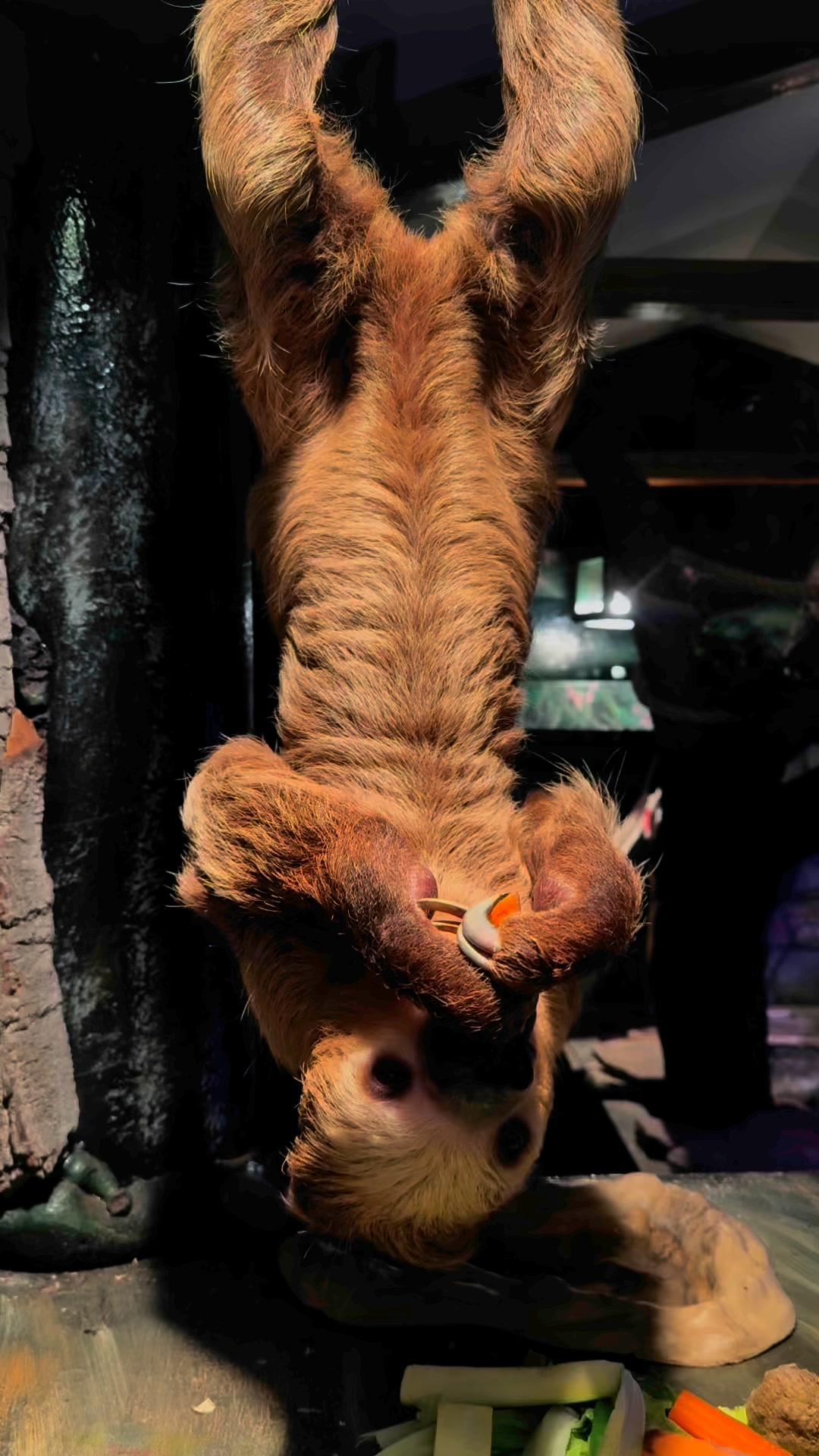- Explore the captivating world of sloths and their unique adaptations to their environment.
- Understand the role of zoos in conservation efforts and how they support endangered species like sloths.
- Learn about the daily care and management of sloths in captive settings.
- Discover the educational and emotional impact of animals like Winston on human audiences.
- Examine the significance of social media in raising awareness and support for wildlife conservation.
Sloths, with their slow-paced lifestyles and distinct appearances, have long intrigued both scientists and wildlife enthusiasts. Often found hanging high in the canopies of Central and South American rainforests, these remarkable creatures have evolved unique adaptations that allow them to thrive in their arboreal habitats. Their slow metabolism and low-energy diet primarily composed of leaves have earned them the reputation as nature’s energy conservers. Understanding the intricate biology of sloths offers a window into the broader ecological dynamics of forest ecosystems.
These fascinating mammals are classified into two families: the two-toed and three-toed sloths. Though similar in many ways, including their well-known slow movements, each species has its own unique characteristics that adapt them to forest life. For instance, three-toed sloths have a specialized diet mainly of leaves from select trees, and they possess a higher number of neck vertebrae, allowing them great flexibility to turn their heads around. These adaptations are not just curious quirks; they play crucial roles in the survival and reproduction of sloths, which are subjects of ongoing scientific research.
Zoos are more than attractions for leisurely afternoon visits—they are vital institutions in the global fight for biodiversity conservation. This is particularly true for species like sloths, which face threats from habitat destruction and illegal pet trade. Zoos provide a sanctuary where such vulnerable species can be protected, studied, and potentially reintroduced into the wild. Beyond direct conservation efforts, zoos often participate in breeding programs that help maintain genetic diversity within captive populations, which is essential for the long-term survival of many species.
Moreover, modern zoos are increasingly adopting holistic approaches to animal welfare that prioritize mental and physical health. For sloths, this involves creating environments within enclosures that mimic their natural habitats, providing ample opportunities for climbing, hiding, and eating native plant species. Keepers are tasked with not only the day-to-day feeding and cleaning but also with engaging these animals in enrichment activities that stimulate their natural foraging and exploration behaviors. This attention to environmental enrichment is critical in maintaining the health and well-being of sloths in captivity, ensuring that they lead lives as close as possible to those of their wild counterparts.
One extraordinary example of successful zoo management and conservation storytelling is Winston, a sloth whose leisurely antics and relatable charm have captured the hearts of many on social media. His presence provides a platform to educate the public about the challenges sloths face in the wild and the importance of conservation efforts. Animals like Winston act as ambassadors for their species, helping to raise awareness and spark interest in wildlife preservation among audiences who might not otherwise engage with traditional conservation topics.
Animal ambassadors play a vital role in conservation education, offering a tangible connection between humans and the often overlooked world of wildlife. By showcasing the unique behaviors and needs of animals like Winston, zoos and conservation organizations can foster empathy and understanding. This emotional engagement is crucial in motivating public support for conservation initiatives, whether through financial donations, volunteer efforts, or advocacy.
The role of social media cannot be overstated in this respect. Platforms such as Instagram allow for the sharing of captivating content that can reach a global audience in an instant. Animals like Winston become icons that help translate scientific research into accessible and compelling narratives. This digital presence not only educates but also fosters community among like-minded individuals passionate about wildlife conservation.
Social media campaigns, infused with engaging stories and visuals of animals like Winston, have been shown to significantly increase public awareness and support for wildlife initiatives. They help bridge the gap between scientists, conservationists, and the general public, making information about species conservation more accessible. Through these platforms, followers can learn about the significance of biodiversity and the urgent need to protect the natural environments these animals inhabit.
Conservation efforts require extensive public awareness and support, areas where charismatic animals like Winston shine. By providing memorable and meaningful interactions, these animals encourage humans to reflect on their relationship with nature and take action toward preserving it. Innovative strategies employing the digital footprint of animal ambassadors prove invaluable in cultivating a conservation-minded public.
In summary, the narrative of "Weekdays are hard, Winston helps" showcases the intersection of zoology, conservation, and public engagement. Sloths, with their intriguing biological traits and conservation status, represent the broader challenges and opportunities present in wildlife conservation. Through the combined efforts of zoos, researchers, social media, and community involvement, animals like Winston not only delight audiences but drive home important messages about the importance of protecting our shared planet. These endeavors highlight the powerful role education plays in shaping perceptions and behaviors toward a more sustainable and biodiversity-conscious future.
*****
Source Description
Weekdays are hard, Winston helps🦥


